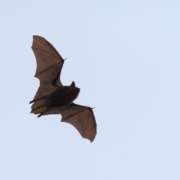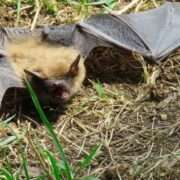Appalachian Corridor, our partner in conservation.
The Massawippi Conservation Trust (MCT) has been considerably active over the past few years for the protection of the natural environments of its territory, and more particularly within the conservation core identified on the western shore of Lake Massawippi. Out of a natural habitat core covering 1,200 hectares, 36.7% of the natural environments are protected in perpetuity thanks to the work of the MCT. This is remarkable!
To achieve these important ecological gains, MCT has been working for over ten years in concert with Appalachian Corridor. From its offices in Eastman, the multidisciplinary team of professionals offers its 17 affiliated members a range of services for the implementation of conservation actions in its territory of action, which extends from Granby to Sherbrooke and south to the Canada-U.S. border. Over the past 18 years, Appalachian Corridor and its partners have protected 14,619 hectares of our rich and precious regional territory!
Among other things, when the MCT wishes to acquire a piece of land for conservation purposes in perpetuity, the Appalachian Corridor team is active in supporting the project by conducting an assessment of the ecological value of the area.
During its visits, the Appalachian Corridor knowledge acquisition team seeks to obtain a complete picture of the property’s biodiversity and sensitive environments. This is why it travels throughout the territory in search of species in a precarious situation, including birds, amphibians, reptiles, mammals and flora. Wetlands, areas with steep slopes, watercourses and mature stands are sensitive areas where the greatest biodiversity and sensitive species are often found. Biologists always keep their eyes and ears open so as not to miss anything.
Old maple groves are among the important targets to be evaluated on the land, especially those that are less accessible because they have usually suffered less disturbance and have more integrity. These maple groves are often rich and shelter a beautiful diversity of species, particularly plant species, some of which are in a precarious situation, such as wild garlic, which is only found in this type of habitat. The red oak stands present in this core habitat are another ecological element of interest in this sector since this type of forest stand is quite rare in our region. These stands are now only found on a few mountain peaks or slopes.
Streams are also one of the biologists’ favorite targets, particularly within the FCM’s core habitat because they are mountain streams where clear, cold and well-oxygenated water flows towards Lake Massawippi. These streams are home to several wildlife species, including amphibians that are very sensitive to the quality of the water and their environment – the northern dusky salamander and the purple salamander. The northern dusky salamander is likely to be designated threatened or vulnerable in Quebec, while the purple salamander is designated vulnerable.
The protection of streams and riparian zones are very important for these species, in addition to being essential to maintaining water quality in Lake Massawippi. It is probably due to the presence of these streams within the core habitat that a population of lake trout, also known as Gray Trout , is maintained in Lake Massawippi since this fish requires a habitat that has cold, clear, well-oxygenated water and where the pH is higher than 5.4.
Clément Robidoux, Conservation Director and Victor Grivegnée-Dumoulin, Biologist, Knowledge Acquisition Coordinator 










